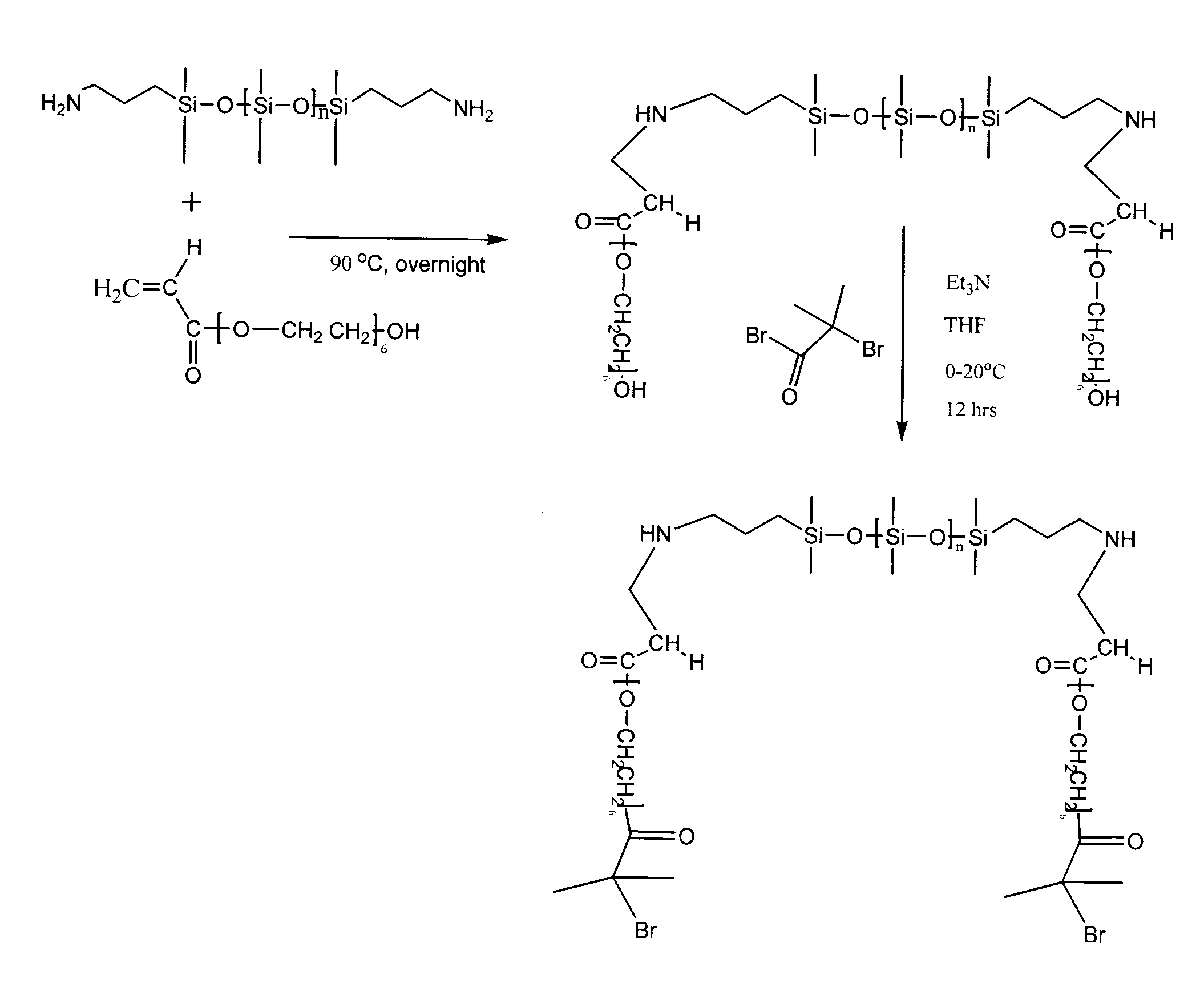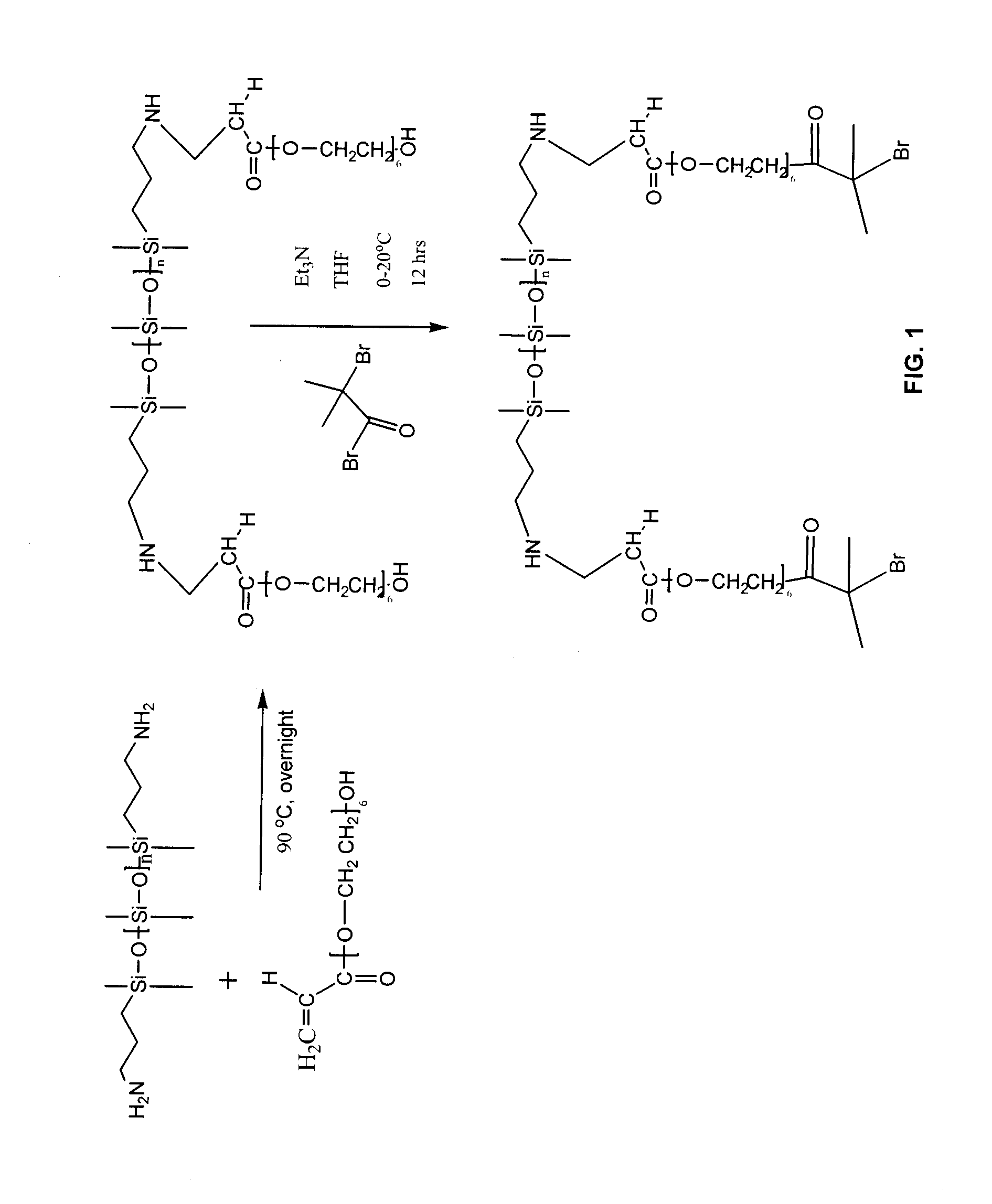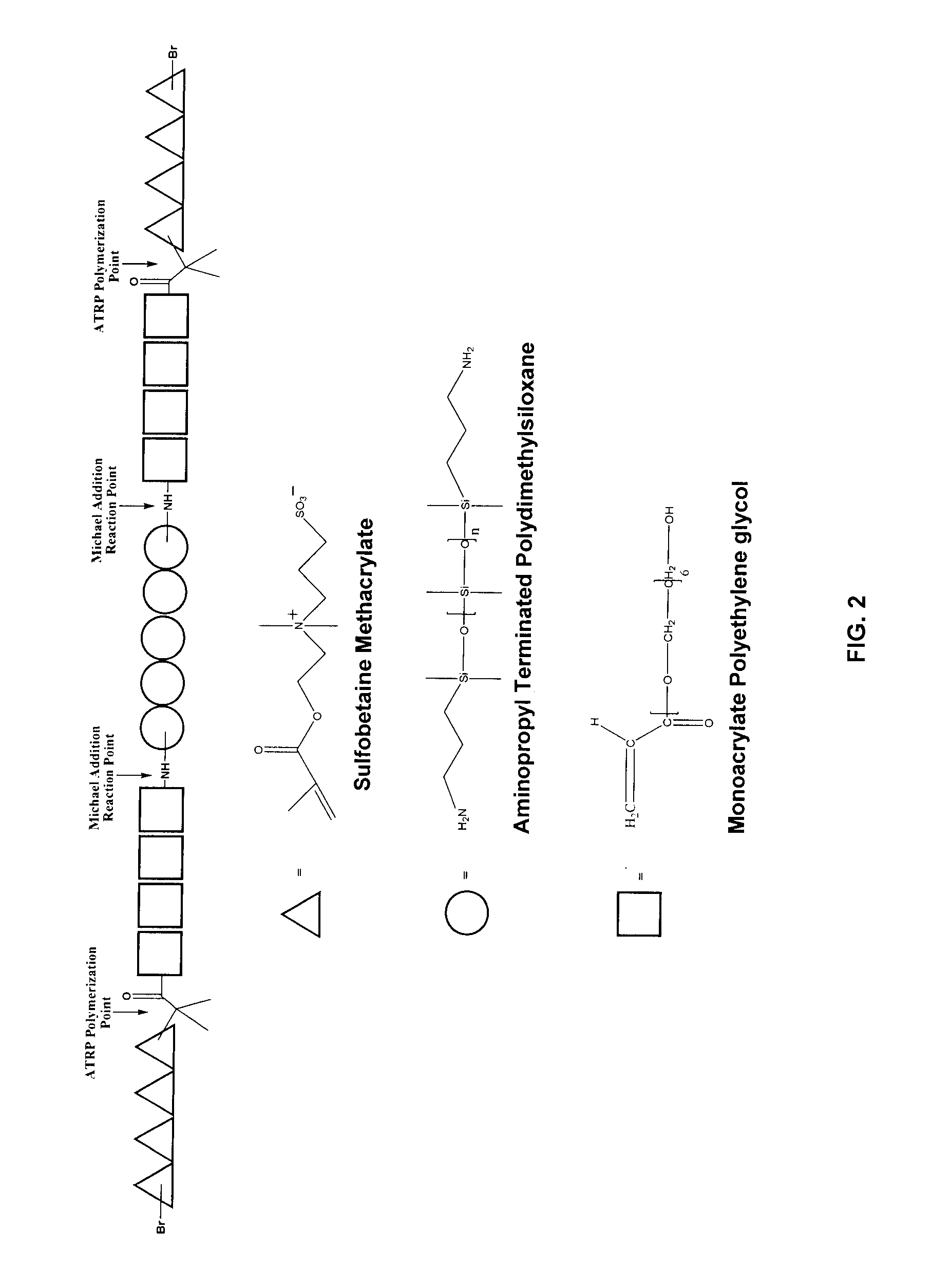Zwitterionic/amphiphilic pentablock copolymers and coatings therefrom
a technology of amphiphilic pentablock and copolymer, which is applied in the direction of biocides, film/foil adhesives, coatings, etc., can solve the problems of organisms only forming a weak adhesive bond to the coating, elastomers suffer, and coatings that do not suppress the settlement of fouling organisms through chemical means
- Summary
- Abstract
- Description
- Claims
- Application Information
AI Technical Summary
Benefits of technology
Problems solved by technology
Method used
Image
Examples
example 1
Aminopropyl terminated polydimethylsiloxane (APT-PDMS) with number average molecular weights of 875 and 3000 were purchased from Gelest, Inc. and used as received. Polyethyleneglycol monoacrylate (Bisomer PEA6) was obtained from Cognis and used as received. [2-(Methacryloyloxy)ethyl]dimethyl-(3-sulfopropyl)ammonium hydroxide (SBMA 97%), 2-Bromoisobutyryl bromide, 2,2′-bipyridine (Bpy>99%) and triethylamine were purchased from Aldrich and used as received. Tetrahydrofuran (THF, 99.8%) was purchased from VWR and used as received. Methanol (MeOH 98%) was obtained from VWR and degassed prior to reaction.
Synthesis of PDMS-PEA6 Macroinitiator [PDMS-PEA6-Br].
FIG. 1. (a) Illustrates the Michael addition of APT-PDMS and polyethyleneglycol monoacrylate. The typical protocol for the macroinitiator synthesis was as follows. APT-PDMS and Bisomer PEA6 (1:2 molar ratio) where weighed out and dispensed into a 20 mL glass vial, capped, heated to 90° and stirred via magnetic stirring overnight. The r...
example 2
Polyurethane coating formulations containing the zwitterionic / amphiphilic pentablock copolymers of Example 1 were prepared as listed in Table 3. A control formulation not containing a pentablock copolymer was prepared and is labeled “acrylic-urethane.” The polyurethane coatings were formulated by first adding the non-reactive compounds into a glass 20 mL vial. The non-reactive components consist of the acrylic polyol, 2,4-pentanedione, and zwitterionic / amphiphilic penta-block copolymer-solvent mixture. The non-reactive components were stirred by magnetic stirring for 30 minutes at room temperature. The reactive components (isocyanate and DBTDAc) were added to the 20 mL vial and stirred for 30 minutes. An additional hour was allowed for the viscosity to build for drawdowns.
TABLE 3Zwitterionic / Amphiphilic Penta-block Copolymer-polyurethane Coatings Formulations12345A-15A-15A-11A-11Acrylic-Cu BeadCuBrCu BeadCuBrurethaneAcrylic Polyol (20%1.81.83.53.58.75HEA, 80% BA), mLXIDT 70B, mL2.22...
example 3
The zwitterionic / amphiphilic polyurethane coatings were subjected to a series of laboratory assays designed to determine their non-fouling and fouling-release properties.
A series of additional control coatings were utilized in this study to gauge performance of experimental coatings. The control coatings are as follows:
Intersleek 700 (commercial fouling-release coating manufactured by International Paint) is represented as “700” in the figures.
Intersleek 900 (commercial fouling-release coating manufactured by International Paint) is represented as “900” in the figures. Silastic T-2 (commercial silicone elastomer manufactured by Dow Corning) is represented as “T2” in the figures.
Polyurethane made from polycaprolactone and a polyisocyanate is represented as “PU” in the figures.
Illustrated in Table 3 (Example 2) are the zwitterionic / amphiphilic polyurethane coatings and the polyurethane control coating formulation abbreviated by the numbers on the bioassay graphs. Prior to conducting t...
PUM
| Property | Measurement | Unit |
|---|---|---|
| wet thickness | aaaaa | aaaaa |
| water contact angle | aaaaa | aaaaa |
| OD | aaaaa | aaaaa |
Abstract
Description
Claims
Application Information
 Login to View More
Login to View More - R&D
- Intellectual Property
- Life Sciences
- Materials
- Tech Scout
- Unparalleled Data Quality
- Higher Quality Content
- 60% Fewer Hallucinations
Browse by: Latest US Patents, China's latest patents, Technical Efficacy Thesaurus, Application Domain, Technology Topic, Popular Technical Reports.
© 2025 PatSnap. All rights reserved.Legal|Privacy policy|Modern Slavery Act Transparency Statement|Sitemap|About US| Contact US: help@patsnap.com



